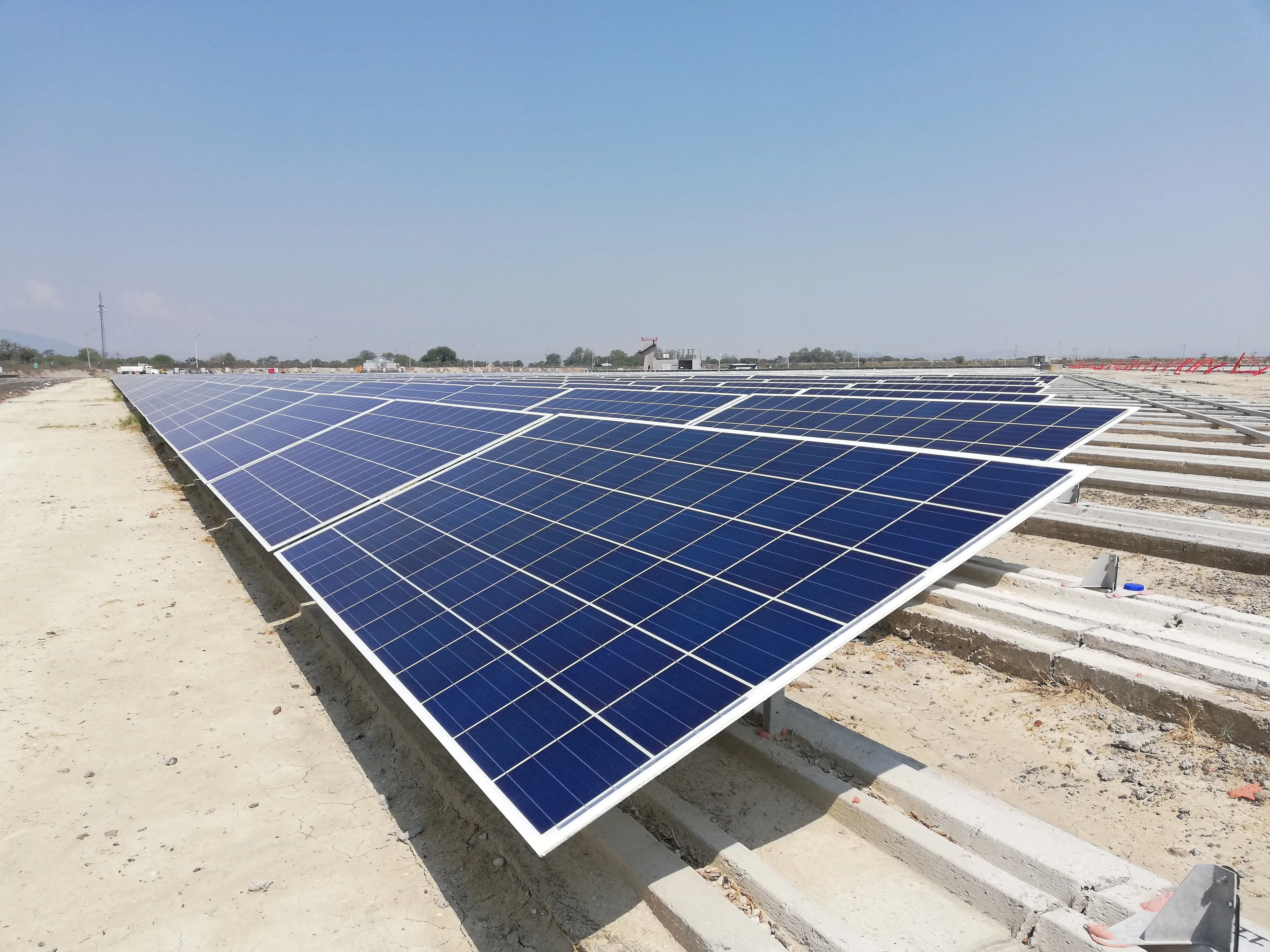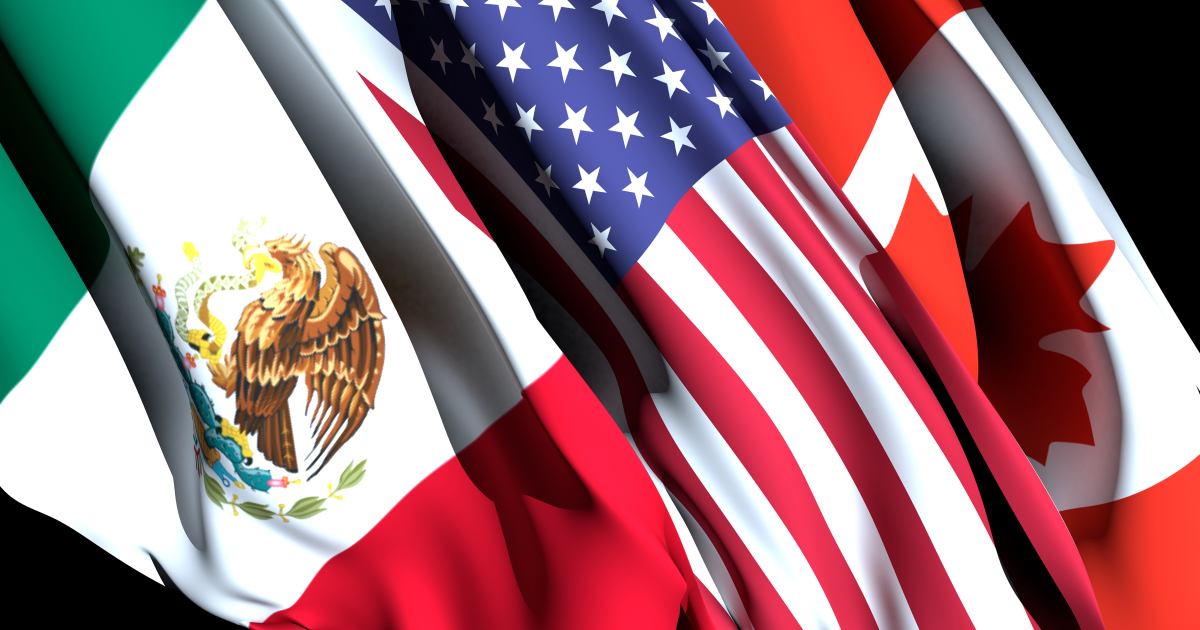
CLIMATE
Using the USMCA for climate action
When the renegotiated NAFTA was put to a vote in late 2020 and early 2021 in the U.S. Congress, some Democrats refused to vote for the revised agreement because it includes no specific provisions that address climate change.1 Without question, the revised agreement should have addressed climate change specifically. U.S. Trade Representative Katherine Tai has rightly described this as a “glaring omission.” Even so, the new USMCA does include provisions that can be used to address some aspects of climate change and can set the stage for doing so more comprehensively and more effectively in future improvements in the treaty.
Although the side letters on the environment and labor in the original NAFTA were left on the side in 1993 and not included in the first formal trade agreement among Canada, Mexico, and the United States, those letters were nevertheless the first accords on the environment and labor ever to accompany an international trade agreement. This was an accomplishment in and of itself, and there was hope at the time that the mechanisms established by those letters would advance environmental and labor protections and would also presage the true integration of environmental and labor concerns into the NAFTA and other trade agreements in the future.
To say the least, this did not happen nearly quickly enough. More than a quarter of a century later, the NAFTA was renegotiated and rebranded as the USMCA, the House passed it at the end of 2019, and the Senate in January 2020. In this revision, the environment and labor provisions of the original NAFTA side letters were enhanced and were at last included in the main text of the agreement, making those provisions enforceable for the first time through revised arrangements for dispute settlement.
Despite these enhancements, with respect to protection of the environment, the situation now is not that much better since the original NAFTA took effect in 1994. Environmental provisions in the new USMCA are more than they were before, but they are less than they ought to be. In the long term, the challenge is to transform the USMCA into an agreement that truly addresses the many links between trade and the environment. Yet, in the near term, the challenge for those who seek effective environmental action is to make the most of the strengthened provisions. Equally, it is to find ways to fight climate change through the agreement despite the unfortunate fact that climate change is nowhere mentioned in the agreement.
How do we address this climate challenge?
As Joshua Meltzer has pointed out, “While USMCA has been criticized for failing to explicitly include climate change commitments, there are a number of provisions that support climate action.”2 For example, the environmental chapter of the USMCA – Chapter 24 – includes requirements for maintaining the effective enforcement of environmental laws and maintaining procedures for assessing the environmental impacts of proposed projects that “may cause significant effects on the environment.”3 Although the language in these obligations could and should have been more demanding of the three USMCA countries, these obligations do exist.
In addition, Chapter 24 incorporates seven multilateral environmental agreements (MEAs) – making them enforceable through USMCA dispute settlement.4 This list of MEAs does not include the United Nations Framework Convention on Climate Change or the Paris Agreement. It should. Yet, enforcement of the agreements already on this list includes various actions on other aspects of sustainable development. These relate to such matters as air quality, ozone layer depletion, marine ship pollution, wetlands protection, and the protection of endangered species.5 Thus, although the listed MEAs do not deal with climate change directly, they do help to diminish some of the impacts of climate change on the environment.
Furthermore, Chapter 24 of the USMCA also includes provisions aimed at protecting biodiversity; preventing the introduction of invasive alien species; maintaining marine wild capture fisheries; furthering sustainable fisheries management; disciplining fisheries subsidies; conserving whales and other marine species; combating illegal, unreported, and unregulated fishing; combating all other kinds of illegal wildlife trade; and ensuring sustainable forest management, including by acting against illegal logging.6 Admittedly, all of these provisions could and should have been tougher, but they are all improvements to the original agreement. Here, too, while these provisions do not deal directly with addressing climate change, they can be employed positively to ease some of the impacts of climate change and, also, to enhance climate adaptation.
The opportunities provided by the USMCA can be used to improve the competitiveness of each of the three countries and of the entire North American region while also furthering climate change mitigation and adaptation.
The opportunities provided by the USMCA can be used to improve the competitiveness of each of the three USMCA countries and of the entire North American region while also furthering climate change mitigation and adaptation as well as other goals for sustainable development. For example: One provision in Article 24 states that “the Parties shall strive to facilitate and promote trade and investment in environmental goods and services.”7 By eliminating tariffs and “potential non-tariff barriers” to that trade, North America can become a more integrated and globally competitive market while also selling to other countries – especially to developing countries – more of the environmental goods and services they much need. Examples of these goods are wind turbines, water treatment filters, solar water heaters, ultraviolet disinfection and desalination equipment, recycling equipment, air and water quality monitors, and LED lights and industrial automation systems. As envisaged in the USMCA,8 the three USMCA parties can also cooperate in the World Trade Organization (WTO) to bring a successful conclusion to the negotiations on eliminating tariffs on environmental goods that have continued in the WTO for twenty years.9
This cooperation should also include efforts to further integrate the North American energy market and to turn that market more quickly toward clean means of producing and distributing carbon-free renewable energy. For instance, in keeping with the recognition in Chapter 11 of the USMCA that “mechanisms exist to support greater regulatory alignment and to eliminate unnecessary technical barriers to trade in the region,” the three countries could facilitate the greater alignment of standards and technical regulations aimed at reducing greenhouse gas emissions from their regional supply chains.10 For example, agreement on common climate-friendly standards on batteries and steel production could improve overall efficiency while also speeding and spreading the reduction of carbon emissions within the region without raising competitive border issues among the three countries on carbon-related trade.
Importantly, the three USMCA parties could also coordinate their research and development on clean energy and on regionwide encouragement of innovative investments in clean energy. Annex 12-D of the USMCA envisages cooperation “on energy performance standards and related test procedures in order to facilitate trade among the Parties and advance energy efficiency….”11 The stated aim in the agreement is harmonization of energy performance standards and test procedures.12 Because the energy markets of the three USMCA countries are significantly and increasingly integrated, the emissions-reducing impact of regulatory and other plans to reduce greenhouse gas emissions in the United States would be increased if the three parties to the USMCA chose to pursue their goals for energy efficiency and energy-related climate action together.
A looming obstacle to regional energy cooperation is the pending electricity legislation in Mexico that would reverse recent moves toward privatization and modernization of the Mexican energy market and turn it back toward the self-defeating and heavily carbon-emitting state direction of the past.13 This legislation could violate USMCA treaty obligations by discriminating against private electricity generators and foreign investors in favor of state-owned enterprises.14 Moreover, because those state-owned enterprises are overwhelmingly dependent on fossil fuels and have done little to reduce their fossil fuel emissions, this reversal by the Mexican government would run counter to keeping the ambitious promises of carbon emissions cuts Mexico has made under the Paris Agreement.15
Historically, Mexico has been sensitive about, and has always taken great pride in, its sovereignty over its energy resources. Mexico’s “direct, inalienable, and imprescriptible ownership” of its hydrocarbons is specifically acknowledged in the USMCA.16 Clearly reserved in the USMCA is Mexico’s “sovereign right to reform its Constitution and its domestic legislation,” including those constitutional provisions and laws relating to hydrocarbons.17 In reliance on these treaty provisions, President Andres Manual Lopez Obrador of Mexico is giving renewed expression to the Mexican national concern about its oil and gas resources. He is trying to reverse reforms made by his predecessor that opened the state-dominated Mexican energy market to both domestic and foreign competition from the private sector. Furthermore, he is proposing additional restrictions on the lawful reach of the private sector in energy production, distribution, and sales in Mexico.18
The Mexican president’s proposed reforms, however, are not as legally straightforward under the USMCA as he insists. As Inu Manak and Alfredo Carrillo Obregon of the Cato Institute have explained, depending on how the proposed Mexican energy bill is implemented, “it is possible that it could violate a number of provisions of the USMCA, and both state‐to‐state and investor‐state dispute procedures are available. Notably, legacy investments are still covered under the scaled back investor‐state dispute settlement rules for three years after entry into force; and for new investments, the oil and gas and power generation sectors are still covered for investor‐state disputes related to covered government contracts. While Canada does not have recourse to ISDS against Mexico under USMCA, it could pursue a claim under the Comprehensive and Progressive Trans-Pacific Partnership (CPTPP), to which Mexico is also a party.”19
Because of its discriminatory nature – and because of the insecurity it would instill in foreign direct investments in the Mexican energy market – this proposed energy bill would hinder new private investment, both foreign and domestic alike, in Mexican energy production and electricity generation, including in clean energy.20 Mexico cannot afford to lose such investment, especially if it hopes to meet its climate pledges.21 Instead of pushing this proposed legislation, which faces hurdles under Mexican law, the Mexican government should instead be seeking more foreign direct investment from the U.S., Canada, and elsewhere. It should be soliciting and welcoming technical assistance and financing from its USMCA partners that would help increase energy efficiency and reduce emissions.22 For their part, the U.S. and Canada should not wait on entreaties from Mexico before making such offers, which could be conditioned on a retreat by Mexico from the proposed legislation.
There is also an opportunity for the three USMCA parties to cooperate in a common approach to the new and rapidly spreading phenomenon of climate-related trade restrictions. The U.S. and the EU have announced that they will impose tariffs or other trade restrictions on imports of “dirty” steel and aluminum.23 This follows the recent proposal by the EU to impose climate-related trade restrictions on imports of carbon-intensive products in a new “carbon border adjustment mechanism.”24 These restrictions are not scheduled to take effect for another few years. However, the U.S. and the EU are enlisting other countries in their steel and aluminum plan; and the U.S., Canada, Japan, and other countries are considering new trade-limiting climate legislation akin to the EU CBAM. At this point, Canada is probably farther along toward enacting such legislation than either the U.S. or Japan; but this could change.25
The countries planning and contemplating these trade-restrictive climate measures say they are doing this to help them take actions to limit greenhouse gas emissions domestically, and to help inspire more ambitious climate actions throughout the world. They claim they are motivated by the urgency of the accelerating pace of climate change and the growing evidence of the economic and environmental devastation that it causes. For the most part, this seems to be true. And yet such measures can also be pretexts for green protectionism, imposing new restrictions on imports – often from developing countries – that are motivated more by a desire for trade protection than by a commitment to climate action.
These actions are being taken outside the legal framework of the WTO, which risks further undermining the efficacy and the centrality of the WTO-based multilateral trading system. At the same time, they raise legal issues under international trade law that could result in highly contentious WTO trade disputes that could transform the WTO’s trade judges into climate judges.26 At the core of these legal concerns is the failure thus far of the trade and climate regimes to grapple with how and where the line should be drawn to distinguish between trade-restrictive measures that are ostensibly climate measures but are in fact purely protectionist, and legitimate climate response measures that have a mix of economic and climate motives.
This line should be drawn globally through multilateral action by the WTO. The parties to the USMCA can be helpful in spurring such multilateral action by the 164 WTO members by working together to establish a common regional approach to shaping and taking such measures in North America. Tackling climate change should not build barriers to trade in North America but should be a driver for addressing climate change. If done consistently with their WTO obligations, a common regional approach could take the form of a climate “club.”27 The three USMCA countries can then work within the WTO to employ their own experience in building on this regional approach by forging a common multilateral approach. In so doing, they could help prevent a global climate trade war that could have harmful global economic effects far exceeding those of the bilateral trade confrontation between the U.S. and China.28
The key to all these climate-related actions under the USMCA, will be cooperation. Regional cooperation under the USMCA must, from now on, see the economy and the environment as one. Going forward, regional economic integration in North America must also be regional environmental integration. Although the phrase “climate change” does not appear in the USMCA, the Agreement can, nevertheless, become a useful tool for taking affirmative actions to mitigate and adapt to climate change between now and some later date when specific and stronger provisions on climate change are added to the treaty.
Endnotes
- 1. Elvina Nawaguna, “USMCA bill tough vote for Democrats over lack of environmental protections,” Roll Call (January 14, 2020).
- 2. Joshua P. Meltzer, “Developing a roadmap for USMCA success,” Brookings Institution Policy Brief (September 2021), 26, at Developing-roadmap-USMCA.pdf (www.brookings.edu).
- 3. Chapter 24.4.1 and Chapter 24.7.1, United States-Mexico-Canada Agreement (USMCA).
- 4. Article 24.8.4, USMCA.
- 5. Articles 24.9-12, USMCA.
- 6. Articles 24.15-23, USMCA.
- 7. Article 24.24.2, USMCA.
- 8. Article 24.4.4, USMCA.
- 9. James Bacchus and Inu Manak, “Free Trade in Environmental Goods Will Increase Access to Green Tech,” Cato Institute, Free Trade Bulletin No. 80 (June 8, 2021), at Free Trade in Environmental Goods Will Increase Access to Green Tech | Cato Institute.
- 10. Article 11.9.2, USMCA.
- 11. Article 12.D.4.1, USMCA.
- 12. Article 12.D.4.2, USMCA.
- 13. Adriana Barrera, “Mexico launches reform to put state in charge of power market,” Reuters (October 1, 2021).
- 14. See, e.g., Articles 14.4, 14.6, and 14.8, USMCA.
- 15. Lisa Viscidi and MK Vereen, “Here’s How Mexico Can Clean Up Its Dirty Energy Industry,” New York Times (November 11, 2021).
- 16. Article 8.1, USMCA.
- 17. Article 8.2(a), USMCA.
- 18. Inu Manak and Alfredo Carrillo Obregon, “Mexico’s Electricity Bill Rolls Back Energy Reforms and Threatens Relations with Trading Partners,” Cato (April 7, 2021).
- 19. Ibid.
- 20. “Top U.S. oil lobby slams Mexican energy policies as undermining USMCA, discriminatory,” Reuters (May 6, 2021).
- 21. Juanita Rico, “Mexico once led the way on climate policies. Now, it has taken a step backwards,” Open Democracy (October 18, 2021).
- 22. Lisa Viscidi and MK Vereen, “Here’s How Mexico Can Clean Up Its Dirty Energy Industry,” supra.
- 23. Inu Manak and Scott Lincicome, “In Biden’s Steel Tariff Deal with Europe, Trump’s Trade Policy Lives On,” Cato (November 2, 2021).
- 24. James Bacchus, “Legal Issues with the European Carbon Border Adjustment Mechanism,” Cato Briefing Paper No. 125 (August 9, 2021); James Bacchus, “When Two Global Agendas Collide: How the EU’s Climate Change Mechanism Could Fall Afoul of International Trade Rules,” World Economic Forum (July 7, 2021).
- 25. “Exploring Border Carbon Adjustments in Canada,” Government of Canada (August 5, 2021), at Exploring Border Carbon Adjustments for Canada – Canada.ca.
- 26. James Bacchus, “Trade Judges aren’t climate judges but they could be soon,” The Hill (November 6, 2021).
- 27. See William Nordhaus, “Dynamic climate clubs: On the effectiveness of incentives in global climate agreements,” Proceedings of the National Academy of Sciences of the United States of America (November 9, 2021), at Dynamic climate clubs: On the effectiveness of incentives in global climate agreements | PNAS.
- 28. James Bacchus, “A global climate trade war is looming. Here’s how to avert it,” South China Morning Post (November 15, 2021); see also, e.g., Gary Clyde Hufbauer, “Divergent climate change policies among countries could spark a trade war. The WTO should step in.,” Peterson Institute for International Economics (August 30, 2021).
Viewpoints

Lourdes Melgar explains how a proposal to overhaul Mexico’s energy policy could derail North American efforts to partner on combating climate change and developing clean technology solutions.

Meghan O’Sullivan examines the wide-ranging implications of Mexico’s proposed energy reforms for the country and for North American relations.

